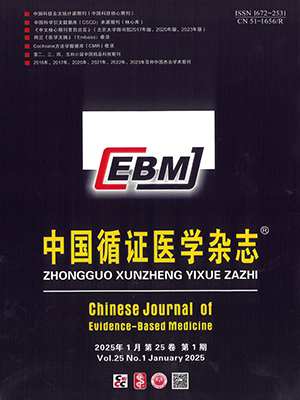| 1. |
Foltz V, St Pierre Y, Rozenberg S, et al. Use of complementary and alternative therapies by patients with self-reported chronic back pain: a nationwide survey in Canada. Joint Bone Spine, 2005, 72(6): 571-577.
|
| 2. |
Chou R, Qaseem A, Snow V, et al. Diagnosis and treatment of low back pain: a joint clinical practice guideline from the American College of Physicians and the American Pain Society. Ann Intern Med, 2007, 147(7): 478-491.
|
| 3. |
Wolsko PM, Eisenberg DM, Davis RB, et al. Patterns and perceptions of care for treatment of back and neck pain: results of a national survey. Spine (Phila Pa 1976), 2003, 28(3): 292-297.
|
| 4. |
Carneiro KA, Rittenberg JD. The role of exercise and alternative treatments for low back pain. Phys Med Rehabil Clin N Am, 2010, 21(4): 777-792.
|
| 5. |
Curtis K, Osadchuk A, Katz J. An eight-week yoga intervention is associated with improvements in pain, psychological functioning and mindfulness, and changes in cortisol levels in women with fibromyalgia. J Pain Res, 2011, 4: 189-201.
|
| 6. |
Holtzman S, Beggs RT. Yoga for chronic low back pain: a meta-analysis of randomized controlled trials. Pain Res Manag, 2013, 18(5): 267-272.
|
| 7. |
Büssing A, Ostermann T, Lüdtke R, et al. Effects of yoga interventions on pain and pain-associated disability: a meta-analysis. J Pain, 2012, 13(1): 1-9.
|
| 8. |
Posadzki P, Ernst E. Yoga for low back pain: a systematic review of randomized clinical trials. Clin Rheumatol, 2011, 30(9): 1257-1262.
|
| 9. |
张宁佳, 胡天琳. 瑜伽在慢性腰痛患者中应用效果的系统评价. 解放军护理杂志, 2016, 33(10): 7-12.
|
| 10. |
Roland M, Fairbank J. The Roland-Morris Disability Questionnaire and the Oswestry Disability Questionnaire. Spine (Phila Pa 1976), 2000, 25(24): 3115-3124.
|
| 11. |
陈裔英, 乔晋琳. 下背痛的评价及其患者生活质量的评价. 中国组织工程研究与临床康复, 2007, 11(23): 4614-4617.
|
| 12. |
何高. 中文版RMDQ下腰痛量表的研制. 合肥: 安徽医科大学, 2005.
|
| 13. |
Higgins JPT, Green S. Cochrane Handbook for Systematic Reviews of Interventions (Version 5.1.0). The Cochrane Collaboration, 2011. Available at: http://www.cochrane-handbook.org.
|
| 14. |
康玉杰, 于红妍. 下背痛运动干预效果的元分析. 体育科学, 2019, 39(2): 63-72.
|
| 15. |
王丹, 翟俊霞, 牟振云, 等. Meta分析中的异质性及其处理方法. 中国循证医学杂志, 2009, 9(10): 1115-1118.
|
| 16. |
王雪冰, 冯连世. 健身气功五禽戏对成年人血脂影响的Meta分析. 中国运动医学杂志, 2017, 36(2): 156-163, 182.
|
| 17. |
刘鸣. 系统评价、Meta-分析设计与实施方法. 北京: 人民卫生出版社, 2011: 87-90.
|
| 18. |
刘关键, 吴泰相, 康德英. Meta-分析中的统计学过程. 中国临床康复, 2003, 7(4): 538-539.
|
| 19. |
Sherman KJ, Cherkin DC, Wellman RD, et al. A randomized trial comparing yoga, stretching, and a self-care book for chronic low back pain. Arch Intern Med, 2011, 171(22): 2019-2026.
|
| 20. |
Wattamwar RB, Nadkarni K. Effect of conventional occupational therapy and yoga in chronic low back Pain. Indian J Occup Therap, 2012, 44(2): 1-8.
|
| 21. |
Standaert CJ. Is yoga an effective therapy for chronic low back pain? Clin J Sport Med, 2007, 17(1): 83-84.
|
| 22. |
Grotle M, Hagen KB. Yoga classes may be an alternative to physiotherapy for people with chronic nonspecific low back pain [synopsis]. J Physioth, 2018, 64(1): 57.
|
| 23. |
Ostrovsky DA. Yoga may be noninferior to physical therapy for disability and pain at 12 weeks and both might improve function more than education in low resource adults with chronic nonspecific low back pain. Explore (NY), 2017, 13(6): 424-426.
|
| 24. |
Saper R, Herman P, Roseen E, et al. Yoga versus physical therapy versus education for chronic low back pain: a randomized non-inferiority trial in an underserved community-based population. Spine J, 2016, 16(10): S291.
|
| 25. |
Tilbrook HE, Hewitt CE, Aplin JD, et al. Compliance effects in a randomised controlled trial of yoga for chronic low back pain: a methodological study. Physiotherapy, 2014, 100(3): 256-262.
|
| 26. |
Highland KB, Schoomaker A, Rojas W, et al. Benefits of the restorative exercise and strength training for operational resilience and excellence yoga program for chronic low back pain in service members: a pilot randomized controlled trial. Arch Phys Med Rehabil, 2018, 99(1): 91-98.
|
| 27. |
Cox H, Tilbrook H, Aplin J, et al. A randomised controlled trial of yoga for the treatment of chronic low back pain: results of a pilot study. Complement Ther Clin Pract, 2010, 16(4): 187-193.
|
| 28. |
Tilbrook HE, Cox H, Hewitt CE, et al. Yoga for chronic low back pain: a randomized trial. Ann Intern Med, 2011, 155(9): 569-578.
|
| 29. |
Monro R, Bhardwaj AK, Gupta RK, et al. Disc extrusions and bulges in nonspecific low back pain and sciatica: Exploratory randomised controlled trial comparing yoga therapy and normal medical treatment. J Back Musculoskelet Rehabil, 2015, 28(2): 383-392.
|
| 30. |
张明军. 瑜伽运动对女性慢性下背痛康复效果的分析. 体育成人教育学刊, 2012, 28(3): 61-62.
|
| 31. |
江领群, 祁俊菊. 瑜伽在慢性腰背疼痛患者中的应用研究. 重庆医学, 2017, 46(24): 3402-3404.
|
| 32. |
李海, 尚艳华, 钟惠雅, 等. 瑜伽姿势训练在腰椎间盘突出症综合康复治疗中的应用观察. 新医学, 2010, 41(6): 397-399, 411.
|
| 33. |
祁俊菊, 王仙园, 杜秋华. 瑜伽对慢性腰背痛患者康复的生物力学机制分析. 中国医学物理学杂志, 2017, 34(7): 748-752.
|
| 34. |
Cramer H, Lauche R, Haller H, et al. A systematic review and meta-analysis of yoga for low back pain. Clin J Pain, 2013, 29(5): 450-460.
|
| 35. |
De Giorgio A, Padulo J, Kuvačić G. Effectiveness of yoga combined with back school program on anxiety, kinesiophobia and pain in people with non-specific chronic low back pain: a prospective randomized trial. MLTJ, 2018, 8(1): 104-112.
|
| 36. |
Hayashino Y, Noguchi Y, Fukui T. Systematic evaluation and comparison of statistical tests for publication bias. J Epidemiol, 2005, 15(6): 235-243.
|




